Vaishak Belle
University of Edinburgh
HyGenar: An LLM-Driven Hybrid Genetic Algorithm for Few-Shot Grammar Generation
May 22, 2025Abstract:Grammar plays a critical role in natural language processing and text/code generation by enabling the definition of syntax, the creation of parsers, and guiding structured outputs. Although large language models (LLMs) demonstrate impressive capabilities across domains, their ability to infer and generate grammars has not yet been thoroughly explored. In this paper, we aim to study and improve the ability of LLMs for few-shot grammar generation, where grammars are inferred from sets of a small number of positive and negative examples and generated in Backus-Naur Form. To explore this, we introduced a novel dataset comprising 540 structured grammar generation challenges, devised 6 metrics, and evaluated 8 various LLMs against it. Our findings reveal that existing LLMs perform sub-optimally in grammar generation. To address this, we propose an LLM-driven hybrid genetic algorithm, namely HyGenar, to optimize grammar generation. HyGenar achieves substantial improvements in both the syntactic and semantic correctness of generated grammars across LLMs.
Incorporating Token Usage into Prompting Strategy Evaluation
May 20, 2025Abstract:In recent years, large language models have demonstrated remarkable performance across diverse tasks. However, their task effectiveness is heavily dependent on the prompting strategy used to elicit output, which can vary widely in both performance and token usage. While task performance is often used to determine prompting strategy success, we argue that efficiency--balancing performance and token usage--can be a more practical metric for real-world utility. To enable this, we propose Big-$O_{tok}$, a theoretical framework for describing the token usage growth of prompting strategies, and analyze Token Cost, an empirical measure of tokens per performance. We apply these to several common prompting strategies and find that increased token usage leads to drastically diminishing performance returns. Our results validate the Big-$O_{tok}$ analyses and reinforce the need for efficiency-aware evaluations.
Program Semantic Inequivalence Game with Large Language Models
May 02, 2025Abstract:Large Language Models (LLMs) can achieve strong performance on everyday coding tasks, but they can fail on complex tasks that require non-trivial reasoning about program semantics. Finding training examples to teach LLMs to solve these tasks can be challenging. In this work, we explore a method to synthetically generate code reasoning training data based on a semantic inequivalence game SInQ: a generator agent creates program variants that are semantically distinct, derived from a dataset of real-world programming tasks, while an evaluator agent has to identify input examples that cause the original programs and the generated variants to diverge in their behaviour, with the agents training each other semi-adversarially. We prove that this setup enables theoretically unlimited improvement through self-play in the limit of infinite computational resources. We evaluated our approach on multiple code generation and understanding benchmarks, including cross-language vulnerability detection (Lu et al., 2021), where our method improves vulnerability detection in C/C++ code despite being trained exclusively on Python code, and the challenging Python builtin identifier swap benchmark (Miceli-Barone et al., 2023), showing that whereas modern LLMs still struggle with this benchmark, our approach yields substantial improvements. We release the code needed to replicate the experiments, as well as the generated synthetic data, which can be used to fine-tune LLMs.
Towards Developing Ethical Reasoners: Integrating Probabilistic Reasoning and Decision-Making for Complex AI Systems
Feb 28, 2025Abstract:A computational ethics framework is essential for AI and autonomous systems operating in complex, real-world environments. Existing approaches often lack the adaptability needed to integrate ethical principles into dynamic and ambiguous contexts, limiting their effectiveness across diverse scenarios. To address these challenges, we outline the necessary ingredients for building a holistic, meta-level framework that combines intermediate representations, probabilistic reasoning, and knowledge representation. The specifications therein emphasize scalability, supporting ethical reasoning at both individual decision-making levels and within the collective dynamics of multi-agent systems. By integrating theoretical principles with contextual factors, it facilitates structured and context-aware decision-making, ensuring alignment with overarching ethical standards. We further explore proposed theorems outlining how ethical reasoners should operate, offering a foundation for practical implementation. These constructs aim to support the development of robust and ethically reliable AI systems capable of navigating the complexities of real-world moral decision-making scenarios.
An Algebraic Framework for Hierarchical Probabilistic Abstraction
Feb 28, 2025Abstract:Abstraction is essential for reducing the complexity of systems across diverse fields, yet designing effective abstraction methodology for probabilistic models is inherently challenging due to stochastic behaviors and uncertainties. Current approaches often distill detailed probabilistic data into higher-level summaries to support tractable and interpretable analyses, though they typically struggle to fully represent the relational and probabilistic hierarchies through single-layered abstractions. We introduce a hierarchical probabilistic abstraction framework aimed at addressing these challenges by extending a measure-theoretic foundation for hierarchical abstraction. The framework enables modular problem-solving via layered mappings, facilitating both detailed layer-specific analysis and a cohesive system-wide understanding. This approach bridges high-level conceptualization with low-level perceptual data, enhancing interpretability and allowing layered analysis. Our framework provides a robust foundation for abstraction analysis across AI subfields, particularly in aligning System 1 and System 2 thinking, thereby supporting the development of diverse abstraction methodologies.
Counterfactual Explanations as Plans
Feb 13, 2025Abstract:There has been considerable recent interest in explainability in AI, especially with black-box machine learning models. As correctly observed by the planning community, when the application at hand is not a single-shot decision or prediction, but a sequence of actions that depend on observations, a richer notion of explanations are desirable. In this paper, we look to provide a formal account of ``counterfactual explanations," based in terms of action sequences. We then show that this naturally leads to an account of model reconciliation, which might take the form of the user correcting the agent's model, or suggesting actions to the agent's plan. For this, we will need to articulate what is true versus what is known, and we appeal to a modal fragment of the situation calculus to formalise these intuitions. We consider various settings: the agent knowing partial truths, weakened truths and having false beliefs, and show that our definitions easily generalize to these different settings.
* In Proceedings ICLP 2024, arXiv:2502.08453
What Is a Counterfactual Cause in Action Theories?
Jan 12, 2025Abstract:Since the proposal by Halpern and Pearl, reasoning about actual causality has gained increasing attention in artificial intelligence, ranging from domains such as model-checking and verification to reasoning about actions and knowledge. More recently, Batusov and Soutchanski proposed a notion of actual achievement cause in the situation calculus, amongst others, they can determine the cause of quantified effects in a given action history. While intuitively appealing, this notion of cause is not defined in a counterfactual perspective. In this paper, we propose a notion of cause based on counterfactual analysis. In the context of action history, we show that our notion of cause generalizes naturally to a notion of achievement cause. We analyze the relationship between our notion of the achievement cause and the achievement cause by Batusov and Soutchanski. Finally, we relate our account of cause to Halpern and Pearl's account of actual causality. Particularly, we note some nuances in applying a counterfactual viewpoint to disjunctive goals, a common thorn to definitions of actual causes.
Practical Considerations for Agentic LLM Systems
Dec 05, 2024



Abstract:As the strength of Large Language Models (LLMs) has grown over recent years, so too has interest in their use as the underlying models for autonomous agents. Although LLMs demonstrate emergent abilities and broad expertise across natural language domains, their inherent unpredictability makes the implementation of LLM agents challenging, resulting in a gap between related research and the real-world implementation of such systems. To bridge this gap, this paper frames actionable insights and considerations from the research community in the context of established application paradigms to enable the construction and facilitate the informed deployment of robust LLM agents. Namely, we position relevant research findings into four broad categories--Planning, Memory, Tools, and Control Flow--based on common practices in application-focused literature and highlight practical considerations to make when designing agentic LLMs for real-world applications, such as handling stochasticity and managing resources efficiently. While we do not conduct empirical evaluations, we do provide the necessary background for discussing critical aspects of agentic LLM designs, both in academia and industry.
Mapping the Neuro-Symbolic AI Landscape by Architectures: A Handbook on Augmenting Deep Learning Through Symbolic Reasoning
Oct 29, 2024
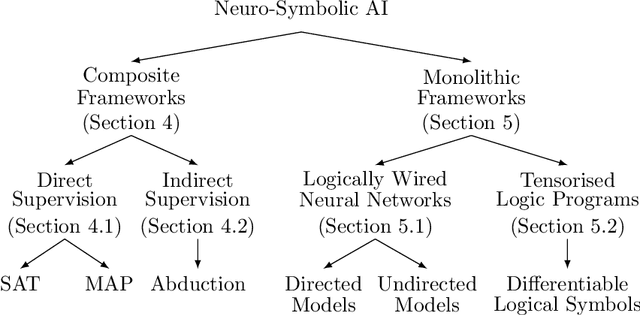
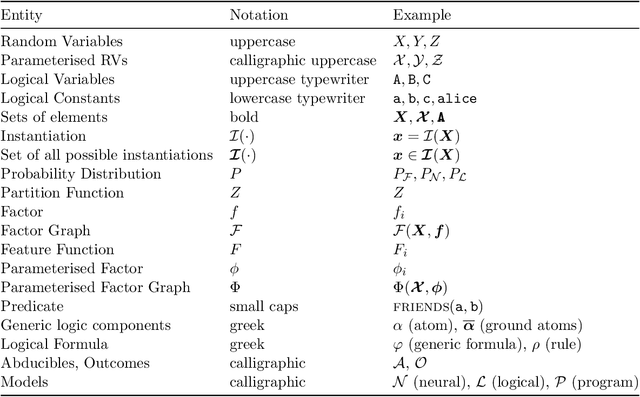
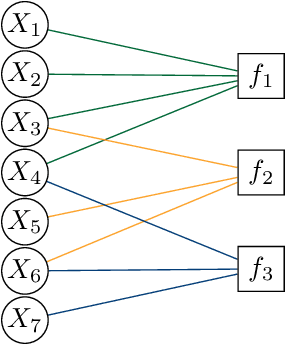
Abstract:Integrating symbolic techniques with statistical ones is a long-standing problem in artificial intelligence. The motivation is that the strengths of either area match the weaknesses of the other, and $\unicode{x2013}$ by combining the two $\unicode{x2013}$ the weaknesses of either method can be limited. Neuro-symbolic AI focuses on this integration where the statistical methods are in particular neural networks. In recent years, there has been significant progress in this research field, where neuro-symbolic systems outperformed logical or neural models alone. Yet, neuro-symbolic AI is, comparatively speaking, still in its infancy and has not been widely adopted by machine learning practitioners. In this survey, we present the first mapping of neuro-symbolic techniques into families of frameworks based on their architectures, with several benefits: Firstly, it allows us to link different strengths of frameworks to their respective architectures. Secondly, it allows us to illustrate how engineers can augment their neural networks while treating the symbolic methods as black-boxes. Thirdly, it allows us to map most of the field so that future researchers can identify closely related frameworks.
Neural Networks Decoded: Targeted and Robust Analysis of Neural Network Decisions via Causal Explanations and Reasoning
Oct 07, 2024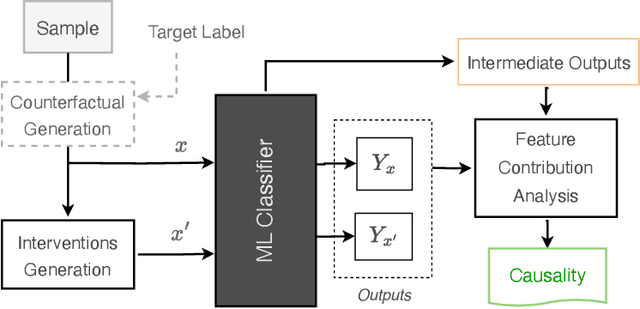

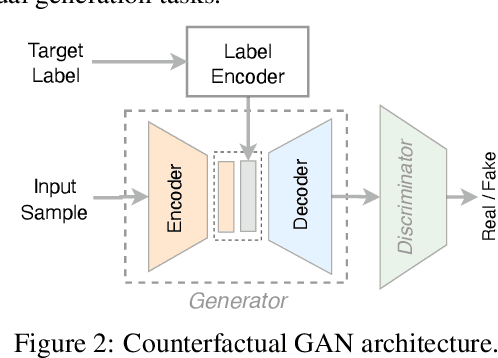
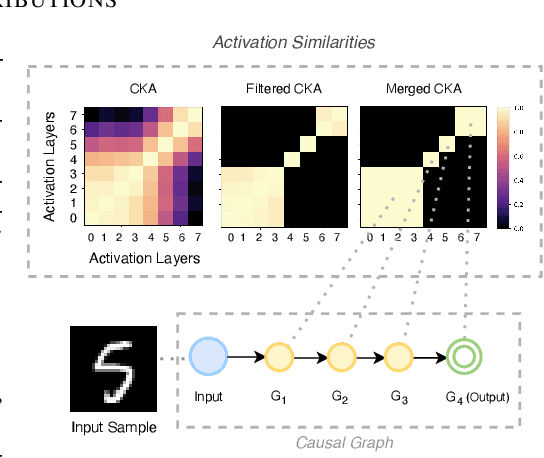
Abstract:Despite their success and widespread adoption, the opaque nature of deep neural networks (DNNs) continues to hinder trust, especially in critical applications. Current interpretability solutions often yield inconsistent or oversimplified explanations, or require model changes that compromise performance. In this work, we introduce TRACER, a novel method grounded in causal inference theory designed to estimate the causal dynamics underpinning DNN decisions without altering their architecture or compromising their performance. Our approach systematically intervenes on input features to observe how specific changes propagate through the network, affecting internal activations and final outputs. Based on this analysis, we determine the importance of individual features, and construct a high-level causal map by grouping functionally similar layers into cohesive causal nodes, providing a structured and interpretable view of how different parts of the network influence the decisions. TRACER further enhances explainability by generating counterfactuals that reveal possible model biases and offer contrastive explanations for misclassifications. Through comprehensive evaluations across diverse datasets, we demonstrate TRACER's effectiveness over existing methods and show its potential for creating highly compressed yet accurate models, illustrating its dual versatility in both understanding and optimizing DNNs.
 Add to Chrome
Add to Chrome Add to Firefox
Add to Firefox Add to Edge
Add to Edge